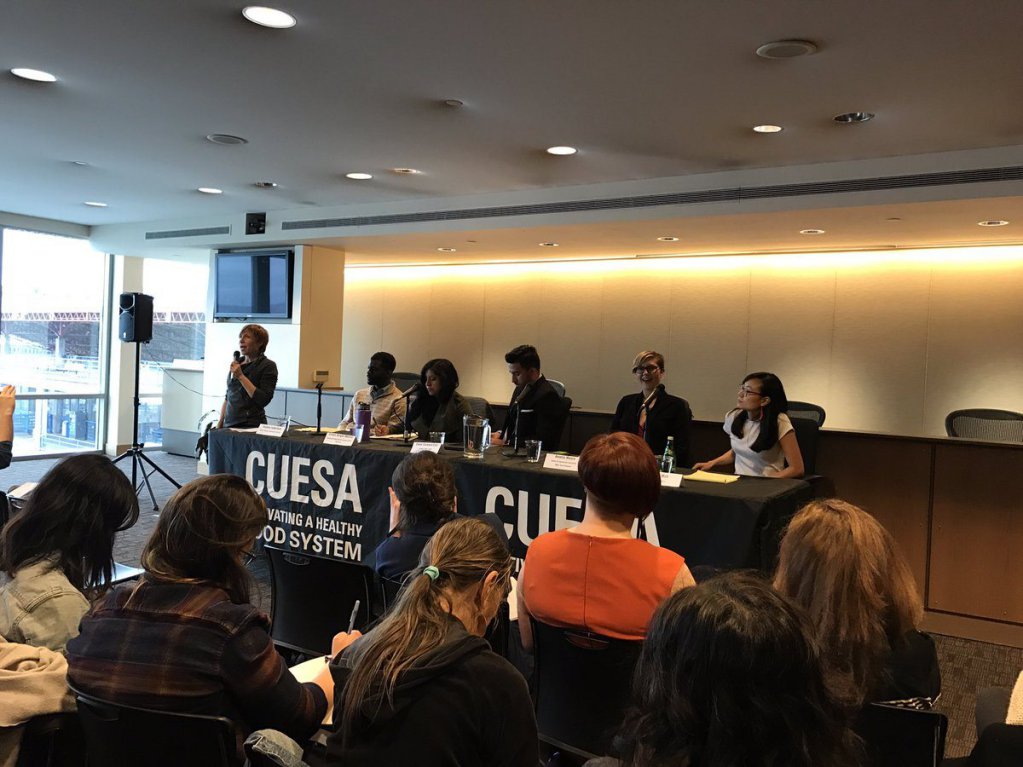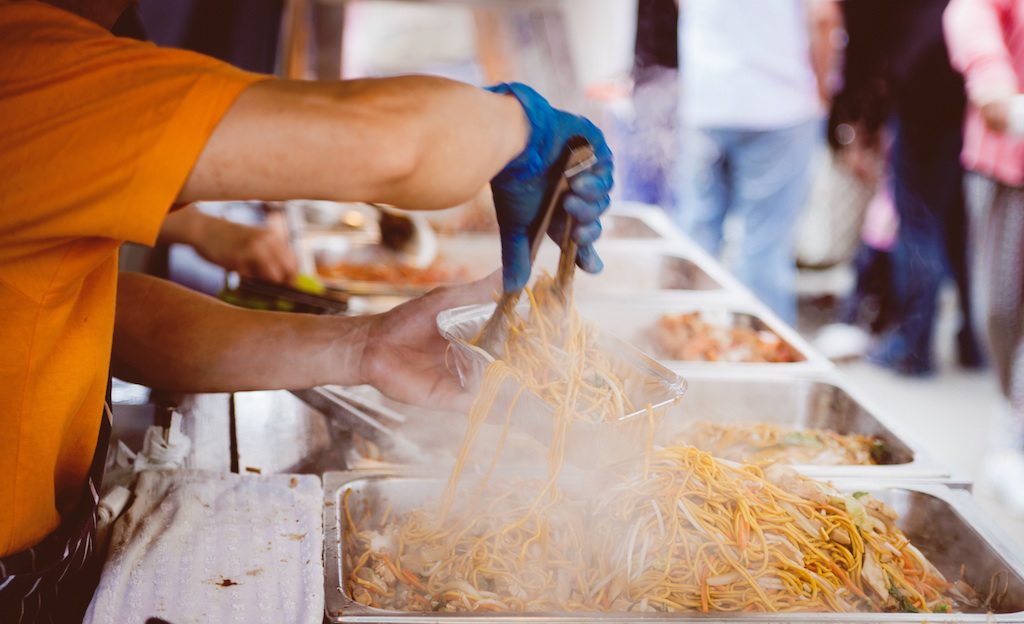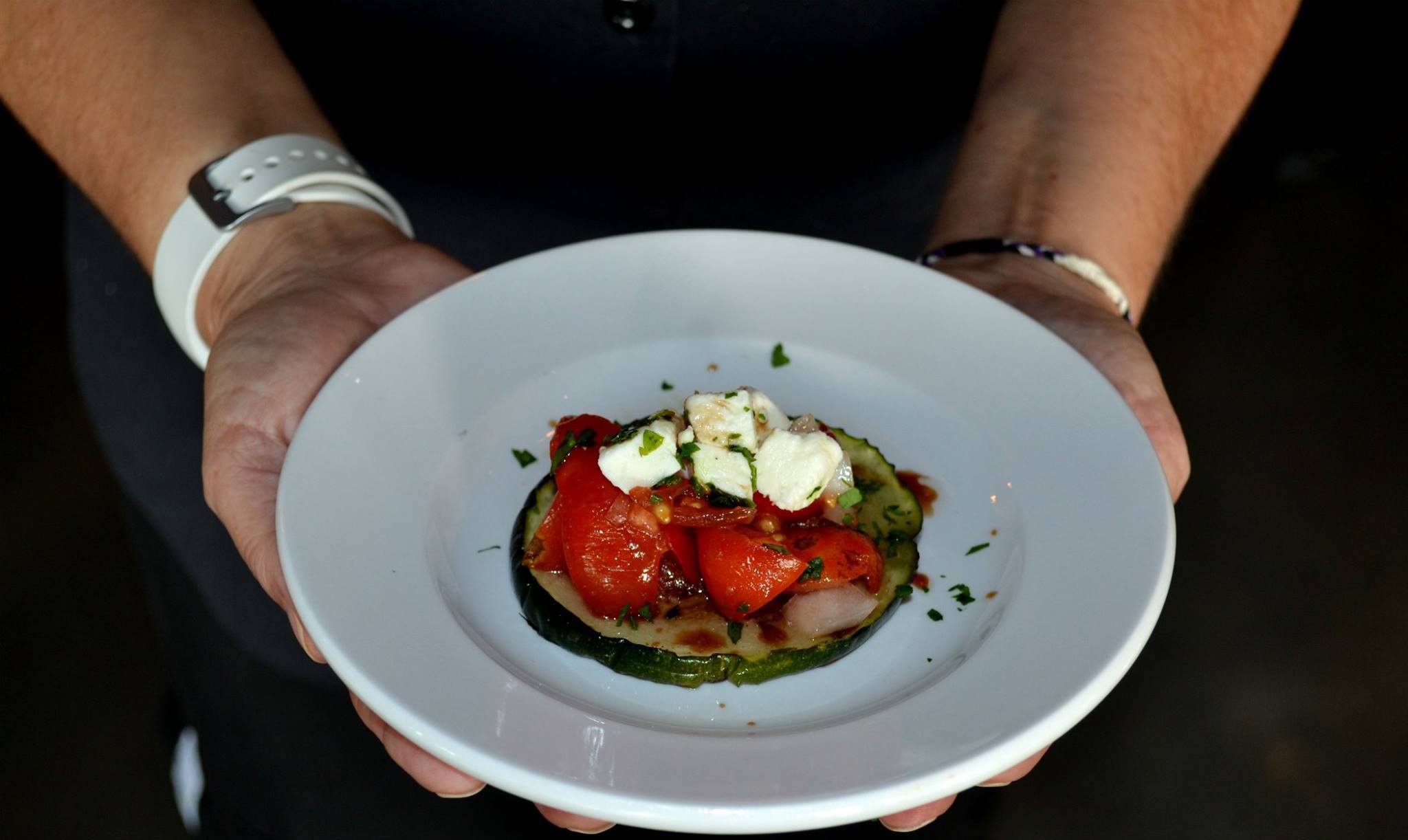In November, when California food-movement people gathered at San Francisco’s Ferry Building to talk about strategy, they were still shell-shocked by Donald Trump’s victory just days before. When a bunch of the same people gathered in the same spot Thursday night, they exhibited a steely resolve. Bewilderment has turned to anger.
“Let’s see some raised fists!” yelled Julie Cummins, director of education for the Center for Urban Education about Sustainable Agriculture (CUESA), which hosted both events, as she introduced the panel members Thursday.
Not only the tone had changed from November. The subject matter had, too. The earlier panel was planned when everybody still thought Hillary Clinton would win. It was called “Politics and the Dinner Table.” The title of last night’s event: “Resist Together! Reframing the Food Movement.”
To a large extent, that “reframing” amounts to triage. Not that anyone means to stop working to promote locally sourced foods or fighting for more regulation of GMOs. But now there are other, much more pressing concerns, such as the fact that heavily militarized federal agents are raiding homes and workplaces and hauling people off to jail to be deported. A lot of the people at risk work in the food business, from farm fields to restaurants.
“We as citizens need to put our bodies on the line, for the first time,” said Edwin Carmona-Cruz of San Francisco-based legal organization, La Raza Centro Legal works with immigrant and low-income communities to advocate for civil rights. In particular, he was referring to protecting immigrants from a wave of recent ICE raids on so-called “sanctuary cities.” On the political front, “We need to put ICE on trial,” he said.
Carmona-Cruz might get his wish, as more people, including those who aren’t activists, defy government intrusions. Evelyn Rangel-Medina, co-director of the law and organizing department at Restaurant Opportunities Centers [ROC] United, noted that about 400 dining establishments across the country have signed up to be “sanctuary restaurants,” as part of a program created to resist the threats posed by Trump—both actual and potential—particularly when it comes to protecting immigrants from the feds. The Trump administration, she said, “has a questionable commitment to the rule of law,” so it’s up to the citizenry to defend it.
Carmona-Cruz offered tips on how to deal with ICE raids, like carefully examining warrants and refusing to abide by them if they contain any mistakes, such as misspelled names. Restaurant owners or others who are the subject of a raid should call La Raza Centro Legal, or a similar legal service such as the American Civil Liberties Union, he said.
Tomorrow in SF > Resist Together! Reframing the Food Movement w/ @rocunited @LARAZACENTROLEG @UCSUSA @nourishresist: https://t.co/PtXaDgsBnH pic.twitter.com/ffMv8bfHxF
— Foodwise (@foodwiseorg) March 22, 2017
There are several bills moving through the California Legislature that the panelists said food-movement people need to pay attention to. One is the proposed California Values Act, which would make California a “sanctuary state.” It would prevent state and local law-enforcement personnel from cooperating with federal immigration officials, and would end the practice, Carmona-Cruz said, of “using local tax dollars to be the tentacle of ICE.” Another bill, AB 3, would provide training for public defenders on the complexities of immigration law. California Values last week moved to the Senate for a vote and AB was amended in February and is currently moving through the assembly.
There are also things people can do in their personal and business lives, the panelists said. For instance, restaurateurs can ensure that their businesses don’t have any discriminatory hiring practices. Food buyers can sign on and commit to the principles of the Good Food Purchasing Program, which provides a metric-based framework that encourages large institutions to direct their buying power toward five core values, including local economies and a valued workforce. People can also lobby their local governments to sign onto the program, said Amelia Moore of the Union of Concerned Scientists, a partner in the program. Institutions are scored at various levels, with the highest level in terms of labor including commitments to buy a certain amount of Fair Trade-certified food products.
“Public institutions spend $72 billion” a year on food, Moore noted, and schools spend about $11 billion. “That’s a lot of leverage,” she said. The more institutions that sign up, the more leverage they have.
A couple of years ago, an event like this likely would have been all about GMOs and local sourcing. Here, as in many other parts of the food reform movement, the reality of President Trump is forcing people to prioritize. “If we were able as a food movement to create a demand for organic and sustainable and for locally sourced,” said Rengal-Medina, “then we can also create a demand for racial equity and economic equity.”











